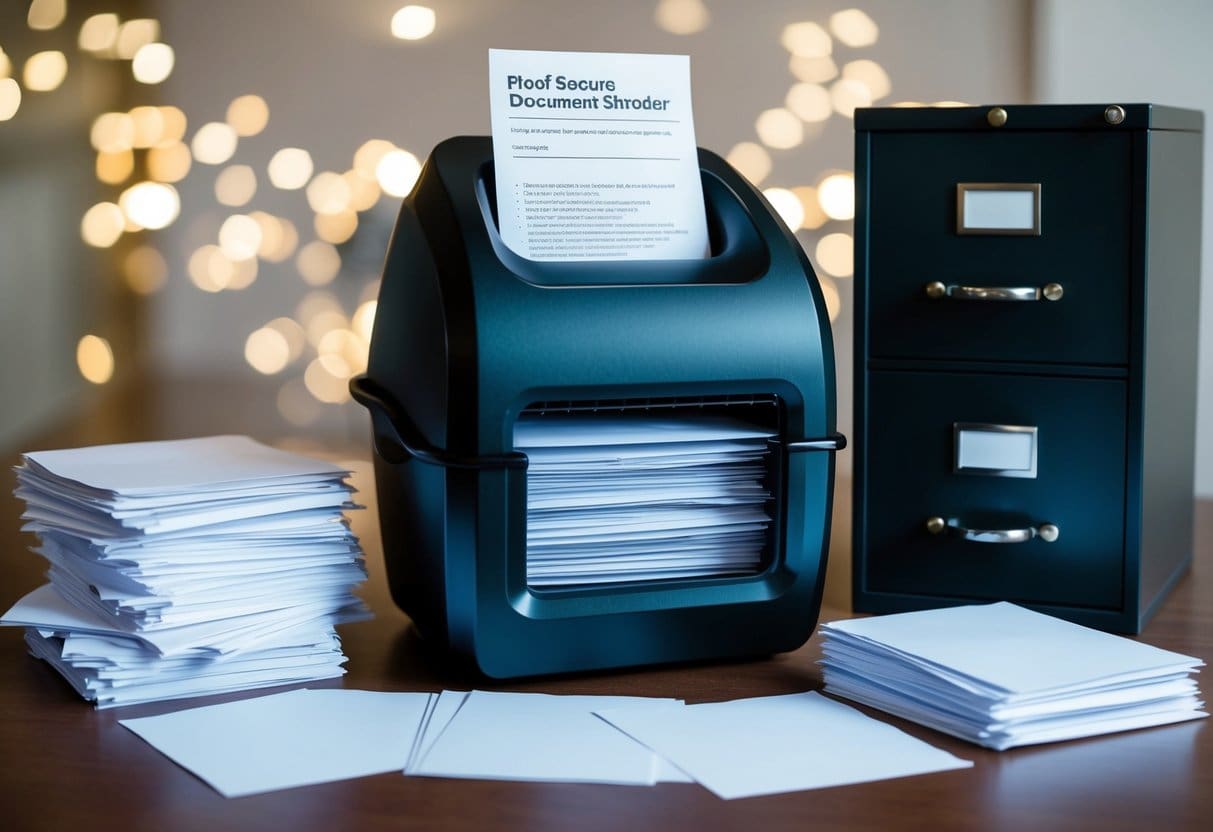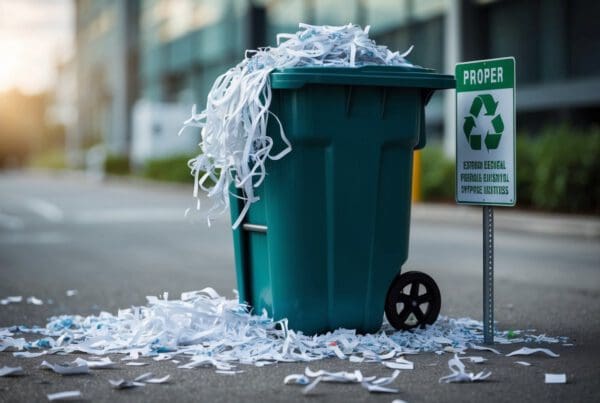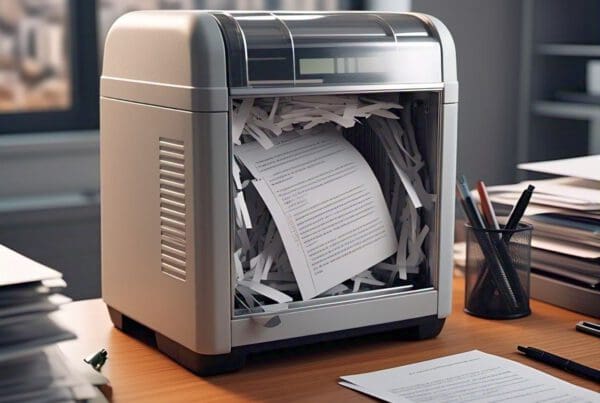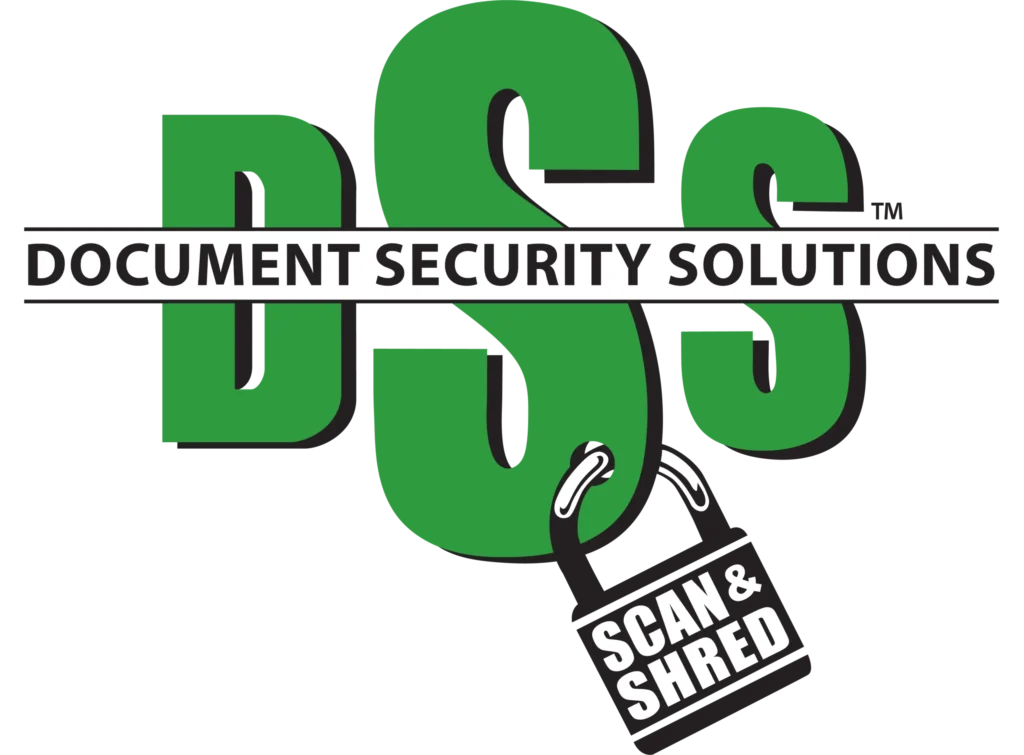Understanding Document Destruction
Secure document destruction is crucial for protecting sensitive information. We’ll explore why this is important and the various services available.
The Importance of Secure Document Destruction
We need to securely destroy documents with confidential information to protect against identity theft and data breaches. When sensitive information falls into the wrong hands, it can lead to severe financial and personal harm.
It’s important for us to follow data protection regulations that mandate responsible disposal methods. Laws like GDPR highlight the significance of handling private data securely. By destroying documents properly, we can ensure compliance and avoid hefty fines. This practice helps us maintain trust with our clients and stakeholders.
Different Types of Document Destruction Services
There are various services available for document destruction. Shredding services are popular and offer both on-site and off-site options. On-site shredding allows us to witness the destruction process, ensuring security. Off-site shredding involves sending documents to a facility that destroys them securely.
We also have digital options for destroying electronic records. Hard drive destruction ensures that data on old devices is completely unrecoverable. Some services offer certificates of destruction, providing proof that documents or data have been securely destroyed.
By choosing the right type of service, we can ensure the safe and proper disposal of sensitive materials. This protects our information and complies with necessary guidelines.
Selecting a Document Destruction Service
When choosing a document destruction service, it’s important to evaluate several key criteria. We need to consider the provider’s security measures, the shredding process they use, and their compliance with legal standards.
Factors to Consider When Choosing a Service Provider
Selecting the right service provider is crucial for secure shredding. Security measures are the first thing to evaluate. Providers should conduct background checks on their employees and offer a reliable chain of custody. They should also provide a “certificate of destruction” after the job is done.
Customer service and flexibility are next. Different methods like mobile shredding, on-site shredding, and off-site shredding should be available for various needs. Some companies also offer drop-off shredding or ship ‘n’ shred options. Cost and availability are also important, so comparing rates from multiple providers can be helpful.
Understanding the Shredding Process
Understanding the shredding process helps us choose the best fit. Many companies offer on-site shredding and off-site shredding.
With on-site shredding, a truck comes to our location, offering a high level of security and convenience. We can watch the process, ensuring our documents are securely destroyed.
Off-site shredding is less immediate but can handle larger volumes. Mobile shredding is a quick and secure option allowing us to dispose of documents at our location swiftly.
Options like drop-off shredding let us bring documents to a secure place, and ship ‘n’ shred involves mailing them securely. It’s crucial to select the method that fits both security needs and convenience.
Compliance and Certification
Choosing a certified provider avoids legal penalties and ensures our documents are handled securely. We should look for companies with compliance certifications such as NAID AAA certification, which assures industry-standard practices.
A “certificate of destruction” serves as proof that our materials were properly disposed of. This is important for maintaining records and addressing any compliance questions. Always verify the provider’s certifications and compliance with national and local regulations.
Selecting a certified vendor protects us legally and ensures complete document security. Understanding these aspects ensures we make a well-informed decision for our document destruction needs.
Affordability Without Compromising Security
Finding affordable and secure document destruction requires understanding the options that protect sensitive information without overspending. We can balance cost and security by exploring various shredding strategies and service plans.
Cost-Effective Strategies for Secure Shredding
When it comes to cost-saving strategies, choosing the right shredding process is key. Recycling agreements with shredding companies can cut expenses. By ensuring that shredded paper is recycled, we might get discounted rates.
Bulk shredding also saves money because shredding large volumes at once often costs less per pound. Some services offer different cut styles, such as strip-cut, which may be cheaper but still provide the security needed for many scenarios.
We should regularly compare performance and prices among different providers. This helps in finding the most cost-efficient solution that doesn’t compromise the security of our information. Selecting vendors who offer volume discounts can result in significant savings without lowering security standards.
Scheduled Shredding vs. One-Time Purge Services
Scheduled shredding services and one-time purges offer different benefits depending on our needs. Scheduled shredding involves setting regular intervals for document destruction. This service is convenient for businesses that gather large amounts of sensitive documents over time. It ensures consistent security and often leads to reduced costs through loyalty rates or bundled pricing.
One-time shredding is ideal for occasional, high-volume purges. For example, when clearing out old records, this service can be more economical on an as-needed basis.
Each method offers a unique set of advantages. We assess our document disposal patterns and volume before deciding. Flexible service agreements allow us to switch between methods, maximizing both affordability and security.
Best Practices for Secure Document Handling
To handle documents securely, we need to focus on creating a solid chain of custody and safeguarding data with strong protection measures. These steps help ensure that confidential information remains secure from creation to destruction.
Establishing a Secure Chain of Custody
A secure chain of custody starts with tracking every document from its creation to its disposal. We should label or tag documents clearly. Document logs can help us track who accessed each piece.
Using lockable bins and restricted areas limits unauthorized access. Each transfer of documents should be logged. It is best to use signature sheets or digital tracking systems to monitor document movement. We must ensure that only trusted personnel handle sensitive documents.
Working with certified document destruction companies adds an additional layer of security. They offer secure transportation and disposal, helping to maintain our chain of custody.
Implementing Data Protection Measures
Data protection measures can greatly enhance our security protocols. Encryption should be used for digital documents. It makes information unreadable without the correct decryption key. We must use strong passwords and update them regularly to ensure access is well-controlled.
Paper documents should be stored in secure, locked storage when not in use. Shred outdated or unnecessary documents promptly. It’s crucial to regularly review and update our data security policies to address new risks and vulnerabilities.
Training our staff on security awareness is key. Everyone in our organization should understand the importance of these measures and be aware of potential threats, such as phishing attempts. By staying informed and vigilant, we can ensure that our confidential documents remain protected.





